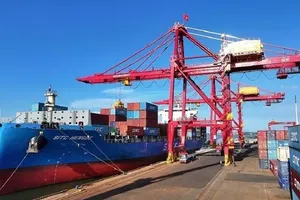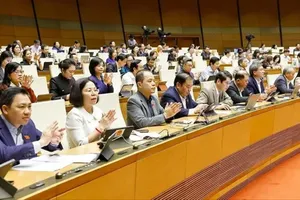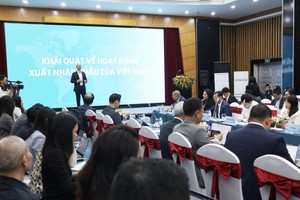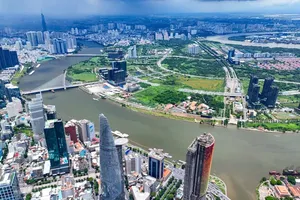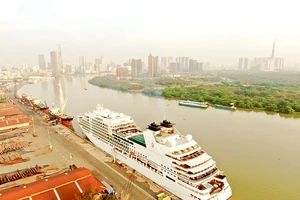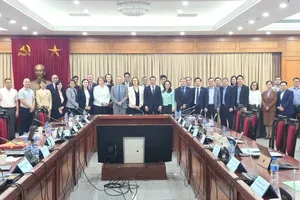
Vietnamese people recognize Ho Chi Minh City as a historically significant symbol, representing a vibrant and evolving space where the spirit of exploration, the aspiration for continuous improvement, and a culture of openness and affection are uniquely intertwined.
Ho Chi Minh City’s mission in the new era
The year 2025 presents a significant confluence of events including the 50th anniversary of the Liberation of the South and National Reunification, the entire nation is simultaneously embarking on a new era of robust national development. This era will see the current generation of Vietnamese people strive to inscribe a new chapter of glory in the nation's history, with the ambition of achieving developed country status by 2045, coinciding with the centennial of President Ho Chi Minh's Declaration of Independence.
This coincidence, perhaps, is not simply a historical accident, but a sacred and fateful sign, that is, the ‘Fate of the Nation’ is coming.
In the upcoming two decades from 2025 -to 2045, Ho Chi Minh City is entrusted with a significant role, serving as the economic engine for the nation while also undertaking a historic mission characterized by three key aspects. Firstly, it is tasked with a pioneering breakthrough mission that not only sets the stage for progress but also creates a new developmental landscape for the entire country, elevating Vietnam's status in the global arena.
Secondly, it embodies an enlightenment mission that calls upon the city—its citizens, leaders, businesses, and government—to diligently pursue and integrate the essence of global knowledge, fostering innovation across all sectors and enhancing the development level of both the locality and the nation.
The essence of creation lies in cultivating the capacity to keenly and decisively understand contemporary trends; transforming challenges and obstacles into advantages and sources of motivation for growth; and converting opportunities into accomplishments that drive significant progress. This initiates a chain reaction where one opportunity leads to another, and success breeds further success - this is the intrinsic strength that Ho Chi Minh City must harness to accelerate its development alongside the entire nation.
Five priorities of the breakthrough entity in order for Ho Chi Minh City to successfully carry out the above-mentioned historical mission, the next part of the article proposes a number of orientations, including reform guidelines and specific initiatives.
These proposals are presented in three groups of contents including focusing on comprehensive coordination of the five priorities of the breakthrough programs, wisely applying the six development principles and implementing eight specific initiatives.
In order to carry out reforms that bring about a breakthrough in the capacity to create value and growth, Ho Chi Minh City as well as the whole country need to focus on comprehensive coordination of the five priorities constituting a breakthrough entity.
First, the city should establish a clear and compelling vision for the future - 2045. This vision needs to be materialized in aspects such as governance foundation, management institutions, and core indicators of development such as labor productivity, urban and industrial modernization, as well as global position in innovation and value chains.
Secondly, the southern metropolis should promote deep, comprehensive and proactive international integration. Integration is not only about attracting foreign direct investment (FDI) to create jobs and boost exports as in previous stages, but also places special emphasis on learning from international experience, promoting the synergy between domestic and global resources, between national potential and the trend of the times.
Thirdly, city policy makers should boost institutional reform and building an elite public authority to effectively meet development requirements in the new era.
Fourthly, the city should invest in strategic infrastructure development, especially energy infrastructure, transportation, logistics, key routes and digital infrastructure which will pave the way for synchronous and sustainable development.
Fifthly, the city should prioritize training and developing high-quality human resources to promptly meet the needs of innovation and rapid economic upgrading.
Comprehensive coordination of the five key priorities will significantly enhance the effectiveness of breakthrough efforts. Specifically, breakthroughs in vision will provide clear direction, while advancements in international integration will generate immense synergy - far exceeding the advantages of low costs and elevating the country's global standing.
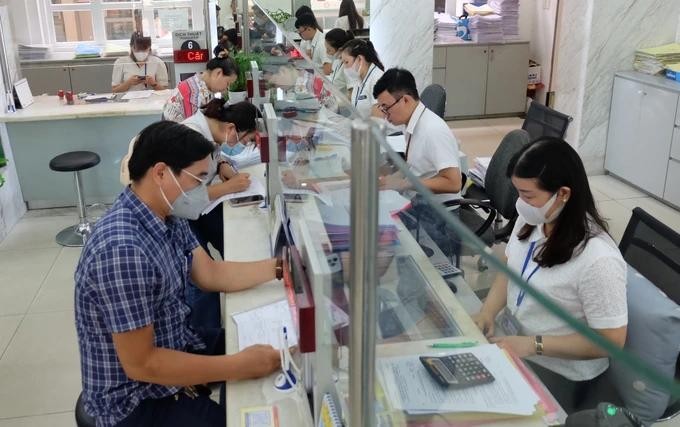
In the pursuit of growth and realizing the future vision, Ho Chi Minh City must carefully apply key development principles. Given the profound global and technological changes underway, the city should focus on six critical principles.
Firstly, a clear distinction must be made between the roles of management and governance. Management encompasses the operational control of resources, processes, and outcomes, essential for maintaining stability and routine performance. Governance, conversely, involves the capacity to articulate vision, establish effective institutions, develop value creation mechanisms, exhibit adaptive responsiveness to change, and foster innovation.
To accelerate progress towards a future vision, governance assumes a foundational and decisive role. An overemphasis on management at the expense of governance will inevitably lead to stagnation and the risk of remaining trapped in the middle-income bracket.
The second critical element is a focus on resource attraction, but this must be intrinsically linked to the ability to cultivate genuine strength. Resources constitute existing assets such as capital, natural resources, and human capital. Real strength, however, is the transformative power to convert these assets into tangible value, including enhanced labor productivity, competitiveness, innovation, and social trust. Concentrating on building real capacity is a pathway to endogenous development, ensuring both depth and high resilience. An imbalance favoring resource mobilization over the development of real capacity will lead to a structurally weak system – large in scale but lacking inherent strength, and susceptible to competitive forces and pivotal changes.
Third, development requires not only growth but also evolution, in which evolution plays a decisive role in growth after the economy has reached a certain level of development. Economic growth is an expansion in key metrics like gross domestic product, investment, and exports. Meanwhile, evolution is qualitative development - reflected in institutional capacity, technological level, business model, social operation method, citizen awareness, and quality of life. Ho Chi Minh City has now reached a development threshold that requires evolution to become a decisive factor to accelerate development.
Fourth, it is the importance of linking the two measures of efficiency and effectiveness in all development investment efforts. Efficient organizations perform routine tasks well, optimize costs, and deliver tangible, immediate benefits. Effective organizations, in contrast, focus on strategic impact, long-term objectives, and systemic values like resonance and social trust. Overemphasizing efficiency while neglecting effectiveness can trap a system in short-term, bureaucratic thinking and local optimization, causing it to lose sight of its broader, long-term direction.
Fifth, it is the achievement that must be evaluated towards the results. Achievement is the result that is recorded - usually through indicators, short-term reports. Achievement is the value left in substance and long-term associated with sustainable and widespread impact. Bias in reporting achievements can lead to chasing after formal numbers, losing the awareness of creating real value, damaging the foundation for long-term development.
Sixth, it is essential to recognize the transformative power of synergy in all forms of cooperation. While cooperation involves different parties working together, each contributing their role toward shared goals, synergy goes a step further. It is the integration of people, knowledge, and resources to generate a collective strength that far exceeds the sum of individual contributions.
Without true synergy, cooperation risks becoming superficial—lacking the depth needed to drive meaningful breakthroughs or unlock new pathways for development.
In summary, history presents unique moments that are never repeated, and the year 2025 stands out as one of them. As the nation celebrates the 50th anniversary of unification, Ho Chi Minh City is tasked with a new historical role—not defined by its past glory, but by its potential to shape the future. The city embodies a rich heritage of heroism and innovation, yet it must shed its historical burdens. Transformative changes in governance, mindset, development strategies, and international partnerships will serve as the 'new drivers' for the city to advance.
